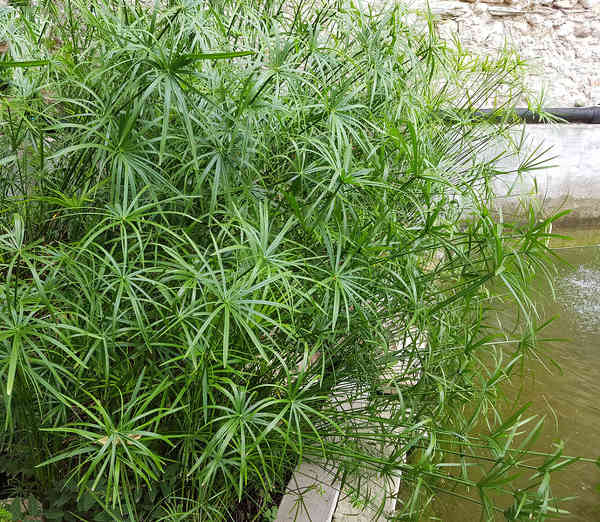

Papyrus can be grown as an annual in the Midwest. It grows only 2-3 feet tall, grows vigorously in or out of water, and is more shade tolerant than the species. This is variously labeled as variety ‘Dwarf Form’, ‘Nanus‘, Tutankhamun’ or King Tut®. These are often used by birds, especially the social species, as nesting sites in its native habitat.ĭwarf cultivars are well suited to container culture.Ī shorter form than the species is normally available as an ornamental. They may become so large that they bend over under their own weight as the cluster becomes almost spherical in shape. This terminal growth, subtended by papery brown bracts, resembles a feather duster at first and will eventually grow to 4-12 inches across. The mature fruits are dispersed in water after they fall from the plant. Eventually brown, nut-like fruits are produced. The nondescript, greenish-brown flowers that are produced at the ends are wind pollinated. Small, secondary umbels with 3-5 rays and narrow, elongated bracts are produced on the ends of the rays. This is a dense cluster of many bright green, shiny thread-like rays. The non-descript, greenish-brown flowers are wind pollinated.Įach straight stem is topped with an umbellate inflorescence. The thick rhizomes creep horizontally along the soil, anchored by numerous roots. These are triangular in shape and a reddish brown color. The new rhizomes and culm bases are covered by papery scales, which are actually reduced leaves. This herbaceous perennial produces just a few basal leaves and many strong, deep green, triangular (3-sided) stems (culms) from woody rhizomes. Papyrus is a vigorous grower that can grow up to 16 feet tall in its native habitat but the ornamental selections are typically a more modest 3-6 feet. Upright stems topped with airy foliage gives this species a tiered effect that is quite ornamental. The starchy rhizomes and culms are edible, both raw and cooked, and the buoyant stems were used for making small boats. In ancient times it was widely cultivated in the Nile Delta, but now is nearly extinct there. The large, dense populations often line bodies of water. It is native throughout the wetter parts of Africa, Madagascar andĮach stem is topped with feather-duster-like growth.Īround the southern Mediterranean where it occurs in vast stands in swamps, shallow lakes, and along stream banks throughout the wetter parts of Africa. papyrus, also called Egyptian reed or paper reed, is a clump-forming African species hardy in zones 9-12.

Papyrus is a sedge (family Cyperaceae) – one of about 600 species in the genus Cyperus – that is probably best known as the source of ancient paper called papyrus. Papyrus is a sedge that naturally grows in shallow water and wet soils.


 0 kommentar(er)
0 kommentar(er)
